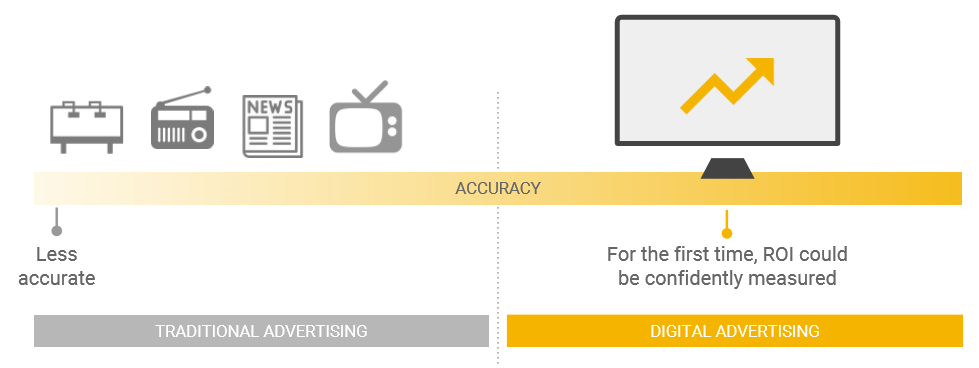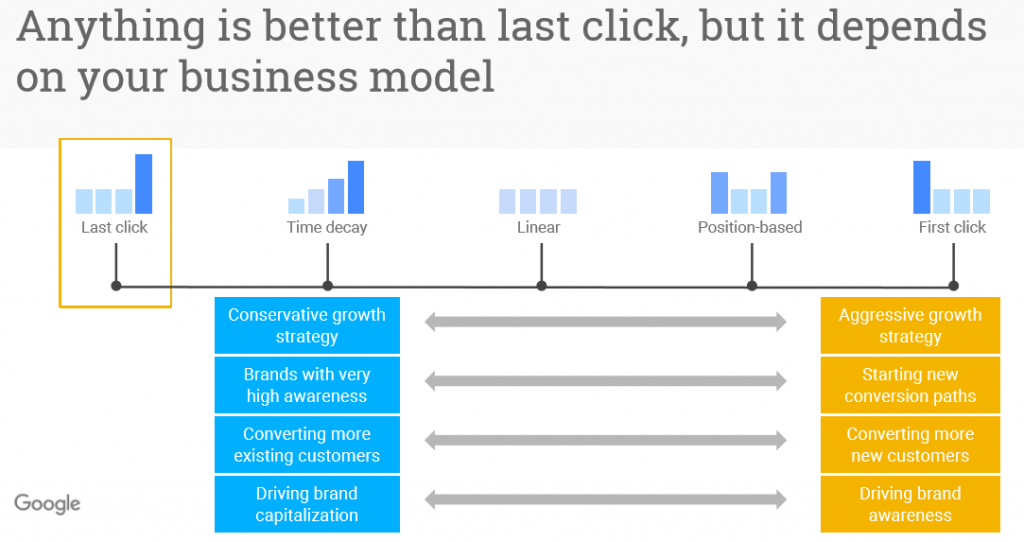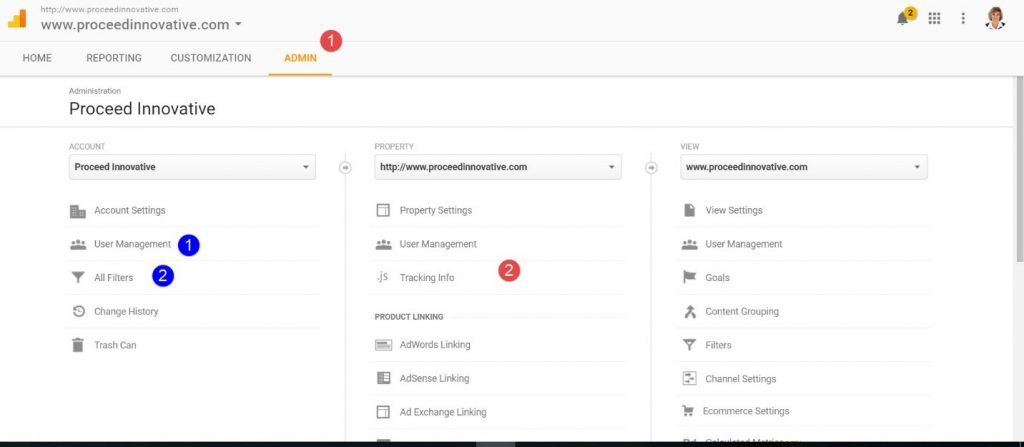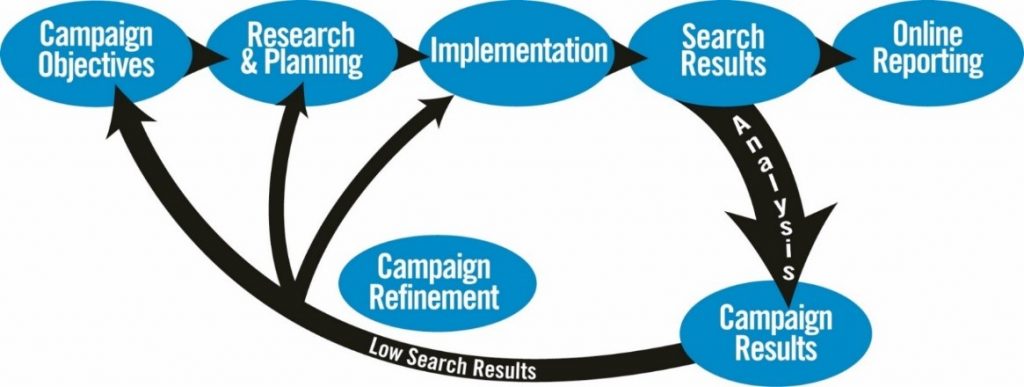The customer journey has evolved. Has your digital marketing strategy evolved as well?
As a proud Google Partner, Proceed Innovative recently hosted a Partners Connect seminar co-hosted by Google. During this event, the latest trends on digital marketing were introduced through a live feed video presented by the Google team. The 2 presentations focused on new paths that consumers are taking before making their online purchases and how business owners must adapt to this new journey customers are taking.
Presentation 1: Jeff Montgomery, Director of Performance Agencies
- The history of measurement in advertising across traditional and digital media
- The shifting of consumer behaviors and how it necessitated new measurement approaches like cross-device & attribution
Presentation 2: Kevin Cho, Agency Account Strategist and Product Expert
- The specifics around cross-device & attribution and how to work with a Partner to put a cohesive measurement plan into action
Following the video, Proceed Innovative had provided some assistance to the businesses on how to analyze the purchasing steps consumers were taking on their website with the use of Google Analytics. Finally, the seminar had turned out to be a success as over 20 business owners were able to gain further insight in regards to how to keep up with the purchasing behaviors of their consumers.
Google Adwords Presentation
During the Google live feed video, the team of representatives had provided valuable information in regards to the latest trends in Adwords conversion tracking and how to to increase conversions.
Measuring Ad Performance. Google first began their video with the significance of digital marketing. They had explained that unlike traditional media, such as radio, television, and billboard ads, you can measure the performance of online marketing. They had also discussed the surge of mobile traffic and how it is making a significant impact in the number of website visits and online purchases. They had concluded with a few eye-opening facts: 90% of people say they use multiple screens for everyday activities, 87% of consumers do research before entering a store, and 73 billion phone calls will be generated by mobile search in 2018.

Traditional and digital advertising
Cross-Device Conversions. They had also discussed the significance of cross device conversions, in which website visitors will use multiple properties that works across device types, web versions, and apps to complete a conversion. Many visitors were using the mobile versions and apps to look at a certain product before returning to buy it on a desktop later. They had provided an example in which individuals could be on a bus, finding an ad of the product/service for which they were searching. They see a product they like, add it to their cart, and then leave. However, many visitors had returned at a later time to view the product again and buy it on their desktop computer.
Attribution Modeling. Google explained that many advertisers are currently only measuring the last click on a page in their analytics reports. However, they discussed the importance of using attribution modeling in order to gain better insight of their visitors’ behaviors. If they had looked at others, such as the time-decay and linear models, they will see that they play a part in the attribution process as well. For example, you may see a similarity of your business with the chart provided below. Advertisers focusing on the time decay attribution model are more conservative and will focus on converting existing customers. On the other side, companies who are looking at first clicks are more aggressive and are focusing on new conversion paths. Finally, you must look at your business model and decide which attribution models are most relevant to you.

Cross-Device Conversions
Increasing Conversions and Determining Which Metrics to Focus On. As every business has different goals, there are different types of conversions. These can include submitting a contact form, signing up for a newsletter, calling the business, and of course, making a purchase. However, business owners should know that their website must be formatted according to what they want their visitors to do. For example, if they want to increase the sales of their newest product, a link to the product’s page should be made obvious to the visitor. Finally, business owners must know which metrics to measure according to their objectives. This will largely depend on the behavior of their website traffic, or what pages they have visited.
Google Analytics Presentation
After the Google live feed video, Proceed Innovative had also presented on how businesses can monitor their website traffic data with the use of a free online tool, Google Analytics. Businesses can gain further insight to their website performance and can track, analyze and refine their digital marketing efforts to achieve better ROI.
Answer your marketing questions. With the use of Google Analytics, you can find answers to the following questions:
- Which marketing initiatives are the most effective for your business?
- At what point are visitors leaving your website? Why?
- Where are your site visitors coming from?
- What do people do while visiting your site?
- What keywords do people use to find your site?
Creating an account. The speaker, Jasmine Panayotov, explained how to create an account and embed the JavaScript tracking code on the website. You can do this yourself or work with your web developer to add the code.
Add filters. You can add filters to the reports in order to exclude internal traffic from your company’s computers, for example. Simply by clicking on the “Admin” tab, select the “Filters” option, and you can add the necessary filters based on IP address, domain or other criteria.

Googe Analytics
Add users. You can allow access for other people to view the reports generated by Google Analytics. Simply add their e-mail address (must be a Google account email), followed by the desired level of access. You can grant them access to manage other users, edit the view of reports, or just read and analyze the reports provided to them.
Google Analytics Reports. You can view a number of reports generated according to the following metrics:
- Acquisition (traffic sources): how visitors were directed to your site (organic, referral, direct, etc.)
- Behavior: what pages users are visiting and at which page they had visited last before leaving
- Demographics: the information about the visitors in terms of age and gender.
- Mobile vs. Desktop: which devices are being used to visit your site (desktop, mobile, tablet)
- Search Console: which keywords users are using to organically find your website
Link AdWords and Google Analytics. As these tools work together, you can link your AdWords PPC (pay-per-click) account with your Analytics account and gain further insight of your PPC campaigns and conversions.
Conclusion
Advertise, track, measure, refine – see better ROI
Finally, Proceed Innovative had concluded the seminar with the fact that search engine marketing is not an event, it is an ongoing process. In order to maintain a high rank on Google, websites must be frequently updated with optimized information. This can include: adding blogs, PRs, service and product pages, videos, pictures, awards, posting on social media, and more. The website must also be monitored in addition to conducting ongoing research to keep and improve the performance and achieve better ROI.

The SEO process
If you would like to receive more help about maximizing your online presence with the use of digital marketing services, you can call Proceed Innovative at (800) 933-2402. Our SEO professionals will be more than happy to assist you with the online marketing of your website.










